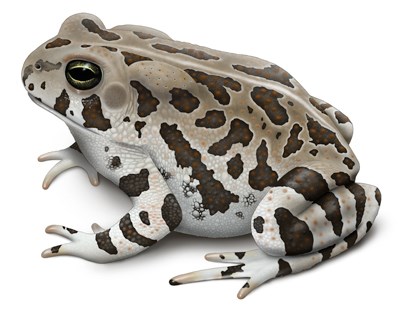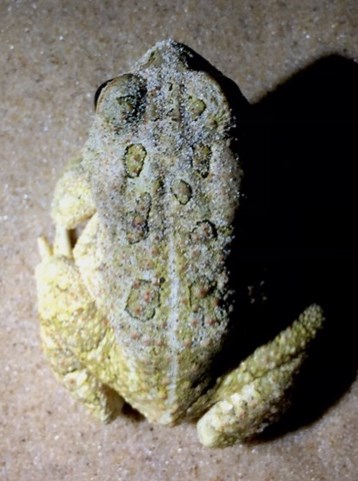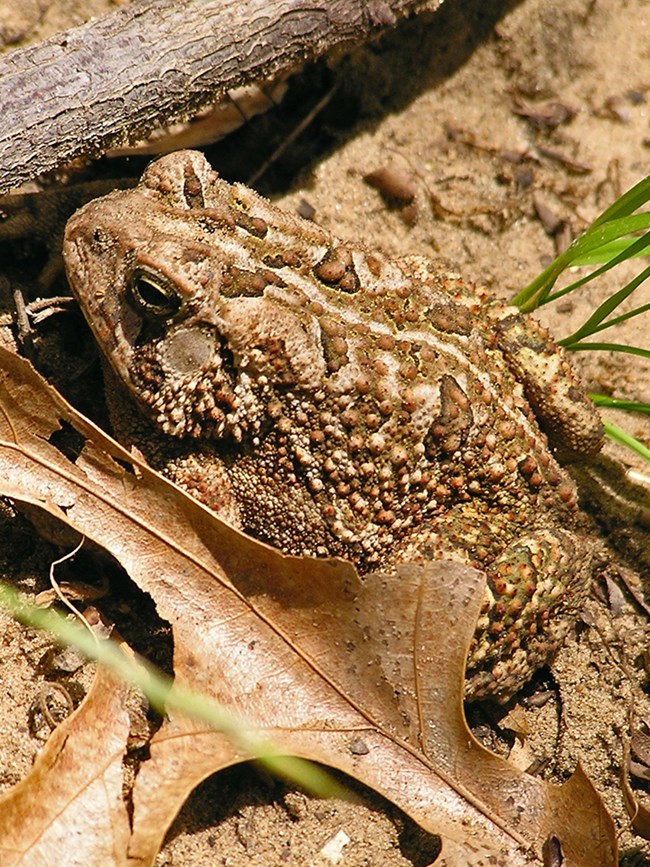
The Indiana Dunes National Park is home to only two toad species, the American Toad (Anaxyrus americanus) and the Fowler’s Toad (Anaxyrus fowleri). While being close to the fowler’s toads most north-westerly range, protecting the habitat of the toad at Indiana Dunes National Park is of critical importance, as the species may be at risk within this area. In the species eastern range it is at less risk and its conservation status is secure. The Fowler's Toad and American Toad look similar but they can be distinguished from one another, as the Fowler’s Toad is usually brown or grayish and there is frequently a light strip down the dorsum. The Fowler’s toad can also be differentiated from the American Toad by the presence of at least 3 warts within the dark spots on its back. 
The Fowler’s Toad is present across most of the Eastern United States with the exception of the coastal areas of the South East along with Maine and inland New York. It becomes rarer around the Great Lakes because of habitat loss. Its habitat is dunes, open woodlands, and beaches, where is lives underground during the day and come out at night to hunt. It hunts for insects and other small vertebrae, but does not eat earthworm like its cousin the American Toad. Fowler’s Toads at the Indiana Dunes National Park are an indicator species for wetland habitat health. Dr. Bob Broadman, a herpetologist from Buena Vista University, studied the effect that wetland restoration at Cowles Bog had on the amphibian health. Models indicate that Fowler’s toads and overall amphibian species richness increased substantially from baseline to post-restoration. 
Fowler’s Toad Fact SheetScientific Name: Anaxyrus fowleri Description: The species is usually brown or grayish and there is frequently a light strip down the dorsum. The toad can be differentiated from the American Toad (Anaxyrus americanus) by the presence of at least 3 warts within the dark spots on its back. Range: Most of the Eastern United States with the exception being the coastal areas of the South East along with Maine and inland New York. Habitat: Dunes, open woodlands, and beaches. It lives in the ground during the day and hunts at night. Diet: Insects and other small invertebrates. Unlike the American Toad, they do not eat earthworms. Call: The call is a long "W-A-A-A-H-H-H", similar to a sheep's calls. Conservation Status: Fowler’s Toad are common throughout the Eastern United States with the exception being within there northern range. The population within this northern range may be at risk from loss of habitat. ❤ Support your park.Donate to the Indiana Dunes National Park. Donations will be used to fund maintenance projects and enhance activities at the park. |
Last updated: February 25, 2022
